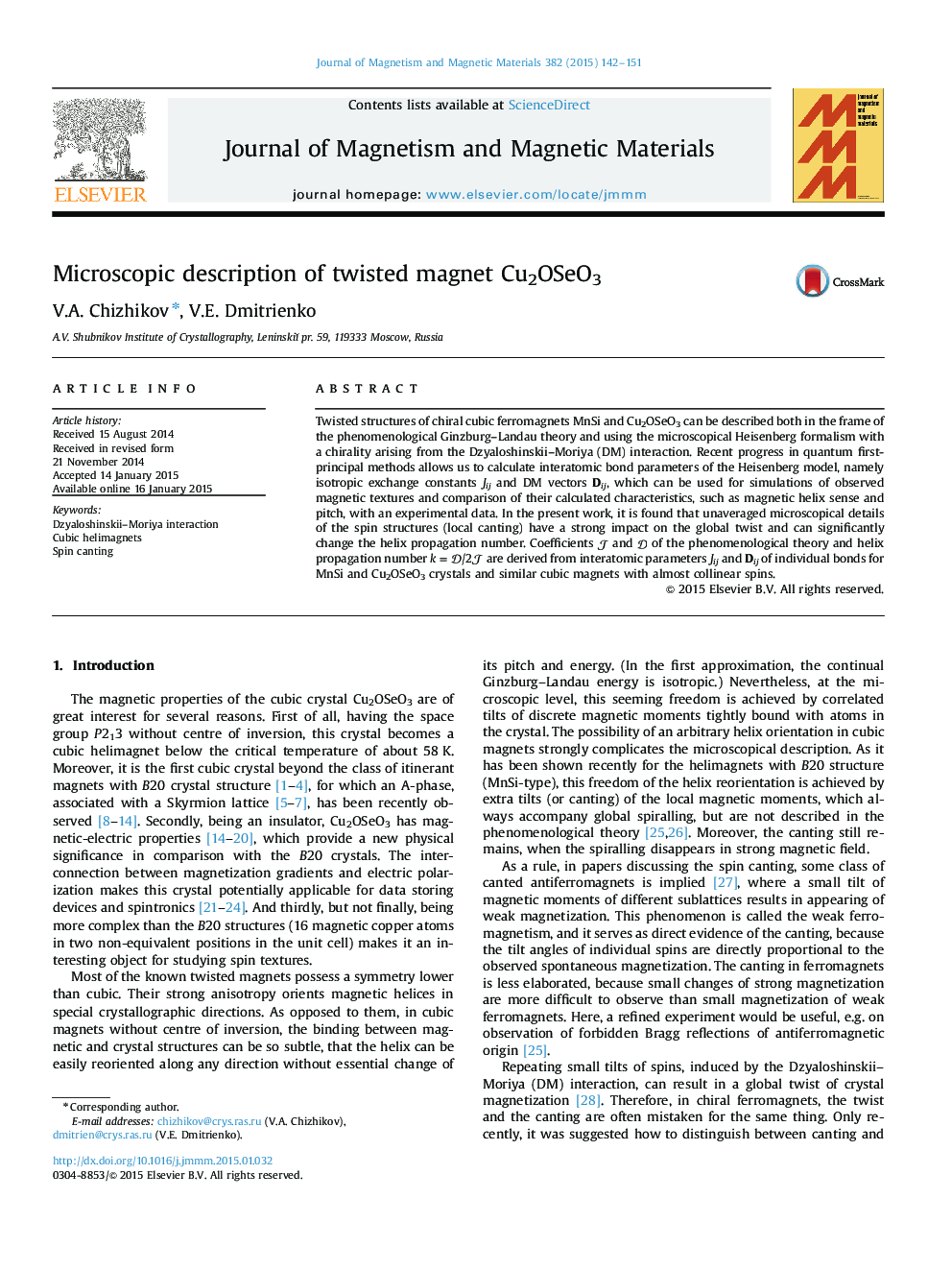| Article ID | Journal | Published Year | Pages | File Type |
|---|---|---|---|---|
| 1799237 | Journal of Magnetism and Magnetic Materials | 2015 | 10 Pages |
•A microscopical description of the Cu2OSeO3 ferrimagnet spin structure is proposed.•We predict a local antiferromagnetic canting in twisted magnets.•The canting has a strong impact on the global twist in chiral magnets.•The helix propagation number is derived from the local magnetic interactions.
Twisted structures of chiral cubic ferromagnets MnSi and Cu2OSeO3 can be described both in the frame of the phenomenological Ginzburg–Landau theory and using the microscopical Heisenberg formalism with a chirality arising from the Dzyaloshinskii–Moriya (DM) interaction. Recent progress in quantum first-principal methods allows us to calculate interatomic bond parameters of the Heisenberg model, namely isotropic exchange constants Jij and DM vectors Dij, which can be used for simulations of observed magnetic textures and comparison of their calculated characteristics, such as magnetic helix sense and pitch, with an experimental data. In the present work, it is found that unaveraged microscopical details of the spin structures (local canting) have a strong impact on the global twist and can significantly change the helix propagation number. Coefficients JJ and DD of the phenomenological theory and helix propagation number k=D/2Jk=D/2J are derived from interatomic parameters Jij and Dij of individual bonds for MnSi and Cu2OSeO3 crystals and similar cubic magnets with almost collinear spins.
